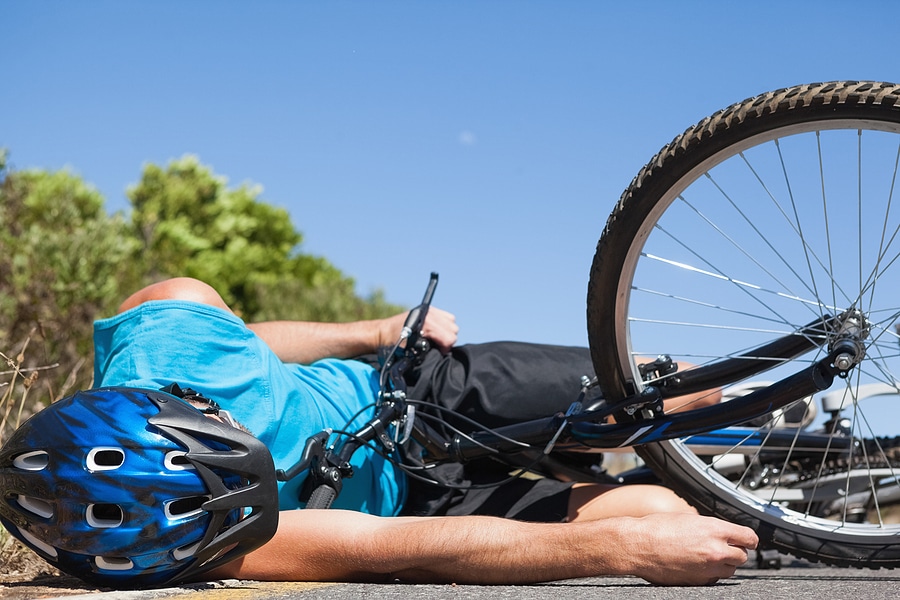Legal Rights Following a Bicycle Accident
Sharing the road with pedestrians, cars, and trucks can lead to dangerous situations for bicyclists. Bicycling should be safe and enjoyable, but accidents can happen even to cautious riders. If you’re a cyclist injured in an accident, knowing how to protect your legal rights is crucial. Understanding your rights and taking specific steps after a crash can help you secure the compensation you deserve.
Understanding the Unique Risks Cyclists Face
Cyclists are vulnerable on the road. Unlike drivers, who have the protection of seat belts, airbags, and a steel frame, cyclists rely on a helmet, if they wear one, to protect them in a crash. This often leads to more severe injuries that might include traumatic brain injuries (TBIs), broken bones, spinal cord injuries, and lacerations. These injuries can be life-changing. They may impact your ability to work, participate in daily activities, or enjoy hobbies.
Immediate Steps to Take After a Bicycle Accident
If you’re injured in a bicycle accident, what you do in the aftermath can be crucial for your health and any legal claims. Taking specific actions can protect your rights.
Get to Safety
Your safety should always come first. If possible, move out of the flow of traffic.
Call Emergency Services
Contact 911 to report the accident. Having an official police report is critical for documenting the incident.
Seek Medical Attention
Some injuries, such as concussions or internal bleeding, might not be immediately apparent. Always get checked out by a medical professional. Your medical records will also prove the harm you’ve suffered.
Document the Scene
Take photos of your injuries, your bicycle, the vehicle(s) involved, and the surrounding area. Note any skid marks, traffic signals, or road hazards that may have contributed to the accident.
Exchange Information
Get the driver’s name, contact information, driver’s license number, and insurance details. If there are witnesses, ask for their contact information as well.
Avoid Admitting Fault
Don’t admit fault even if you think you might be partially to blame. The legal determination of liability can be complex and depends on many factors.
Consult an Attorney
A personal injury attorney will protect your rights and guide you through legal processes.
Legal Protections for Cyclists
Cyclists injured in accidents often have several ways to pursue compensation. There are several common legal claims.
Negligence by the Driver
Driver negligence causes many accidents. Examples of negligence include speeding, distracted driving, running a red light or stop signs, failing to yield, and driving under the influence. If a driver’s negligence caused the accident, you may file a personal injury claim against them. A successful claim requires that you prove that the driver owed you a duty of care. Duty of care refers to a driver’s responsibility to not cause harm to others on the road. An example of the duty of care is obeying traffic laws. You must prove that the driver violated that duty, which caused your injuries and damages.
Premises Liability
Sometimes, accidents aren’t caused by a driver but by unsafe road conditions, such as potholes, debris, poor signage, or malfunctioning traffic signals. In these cases, you may be able to file a claim against the government entity or private property owner responsible for maintaining the area. Claims against government entities often have stricter filing deadlines and requirements.
Product Liability
If a defect in your bicycle contributed to the accident, such as defective brakes or a tire blowout, you may have a product liability claim against the manufacturer.
Uninsured or Underinsured Motorist Claims
If the driver’s insurance policy does not cover your damages, you can file a claim under your auto insurance policy, assuming it has uninsured/underinsured motorist coverage.
Types of Compensation You Can Pursue
As an injured cyclist, you may be entitled to various types of compensation. One type of compensation is for medical expenses, including current and future treatment costs, rehabilitation, and medications. You may also pursue compensation for income lost during recovery and, if your injuries prevent you from returning to your previous job, reduced earning capacity. Pain and emotional distress caused by the accident may be compensated. You can also seek reimbursement for the cost of fixing or replacing your bicycle along with any other damaged belongings.
Dealing with Insurance Companies
Insurance companies may seek to settle claims quickly and for as little money as possible. They may downplay your injuries, argue that you were at fault, or offer a lowball settlement. Wait until you’ve completed medical treatment or clearly understand your long-term prognosis before settling with an insurance company. Avoid giving recorded statements, as these might be used against you later. Entrust all communications to your attorney to ensure you don’t inadvertently say something that could harm your claim.
The Role of Comparative Negligence
Pennsylvania’s 51% comparative negligence rule is critical in determining the outcome of personal injury claims, including bicycle accident cases. The ability to receive compensation depends upon one’s level of fault in causing the accident. If you are found to be 50% or less at fault, you are eligible for compensation. On the other hand, if you are found to be 51% or more at fault, you will not receive compensation.
You Need an Experienced Attorney
A bicycle accident can be overwhelming, especially if you’re recovering from injuries and dealing with insurance companies. Abramson & Denenberg understands the challenges you face and are here to help you get the justice and compensation you deserve. Don’t wait—time is critical when building a strong case. Contact us at 215-398-7066 for a free case consultation. Let us help you get back on the road to recovery.

